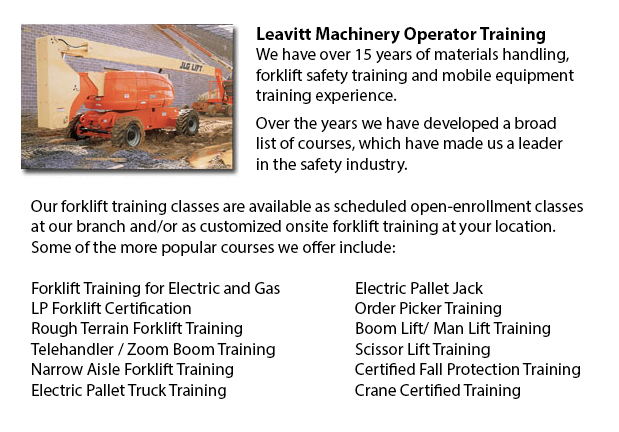
Boom Lift Safey Training Grande Prairie - Boom lifts fall under the type of elevated work platform or aerial lifting device. Most commonly utilized in construction, industry, and warehousing; the boom lift is really versatile that it could be used in virtually whichever surroundings.
The elevated work platform is utilized so as to allow access to heights which were otherwise inaccessible using other means. There are dangers inherent when making use of a boom lift device. Workers who operate them must be trained in the correct operating procedures. Accident avoidance is vital.
Boom Lift Training Programs cover the safety aspects involved in boom lift operation. The program is suitable for people who operate self-propelled boom supported elevated work platforms and self-propelled elevated work platforms. Upon successfully completing the course, participants will be issued a certificate by an individual who is licensed to confirm finishing a hands-on evaluation.
In order to help train operators in the safe use of elevated work platforms, industry agencies, local and federal regulators, and lift manufacturers all play a part in providing the necessary information and establishing standards. The most important ways in avoiding accidents connected to the utilization of elevated work platforms are as follows: performing site assessments; checking equipment; and putting on safety gear.
Key safety considerations when operating Boom lifts:
Operators need to observe the minimum safe approach distance (MSAD) from power lines. Voltage can arc across the air to find an easy path to ground.
To be able to maintain stability when the platform nears the ground, a telescopic boom must be retracted before lowering a work platform.
Boom lift workers should tie off to guarantee their safety. The lanyard and safety tools need to be attached to manufacturer provided anchorage, and never to other poles or wires. Tying off may or may not be needed in scissor lifts, which depends on specific job risks, local rules, or employer guidelines.
Avoid working on a slope which goes beyond the maximum slope rating as specified by the manufacturer. If the slop goes beyond requirements, then the machinery should be winched or transported over the slope. A grade can be easily measured by laying a minimum 3-feet long straight board or edge on the slope. After that a carpenter's level could be laid on the straight edge and raising the end until it is level. The per-cent slope is attained by measuring the distance to the ground (also called the rise) and dividing the rise by the length of the straight edge. Afterward multiply by one hundred.
-
Forklift Operator Certification Grande Prairie
Forklift Operator Certification Grande Prairie - Certification for forklifts are needed to ensure the safe utilization of forklifts for those employers in industrial, warehouse or construction environments. The training has to involve a method of edu... More -
Skid Steer Ticket Grande Prairie
Skid Steer Ticket Grande Prairie - On a skid-steer loader, the lift arms are beside the driver along with pivot points behind the driver's shoulders. This makes them different as opposed to a conventional front loader. Due to the operator's proximity... More -
Order Picker License Grande Prairie
Order Picker License Grande Prairie - Order preparation operation or order picking as it is more usually known is a method utilized in warehouse operations and consists of staff referred to as order pickers. The order picker's job is to take and coll... More -
Telehandler Certification Grande Prairie
Telehandler Certification Grande Prairie - Telehandler certification programs are both for operators who have some experience driving a typical forklift and for people with no experience. The real-world training provided by these programs produces gr... More -
Skid Steer Loader Training in Grande Prairie
The engine powered skid-steer loader consists of a small and rigid frame, equipped with lift arms which could attach to numerous industrial attachments and tools in order to perform various labor saving tasks. Typically, skid-steer loaders are four-w... More -
Crane Training School Grande Prairie
Crane Training School Grande Prairie - The crane training school offers industry-relevant programs. Courses provide trainees with learning results that match current industry demands. Our small class sizes combine theory and hand-on experience. Our q... More -
Telehandler License Grande Prairie
Telehandler License Grande Prairie - The telescopic handler or telehandler is a commonly used machine in agricultural and industrial applications. This equipment is similar in look to a forklift and even works in a similar manner, even though telehan... More -
Aerial Boom Lift Ticket Grande Prairie
Aerial Boom Lift Ticket Grande Prairie - Aerial lifts can be utilized to accomplish several unique tasks executed in hard to reach aerial spaces. A few of the odd jobs associated with this kind of lift include performing daily maintenance on structur... More

Forklift Training Grande Prairie
TOLL FREE: 1-888-254-6157
11205-98 Avenue
Grande Prairie, Alberta
forklifttraininggrandeprairie.com
Email Us
About Us



